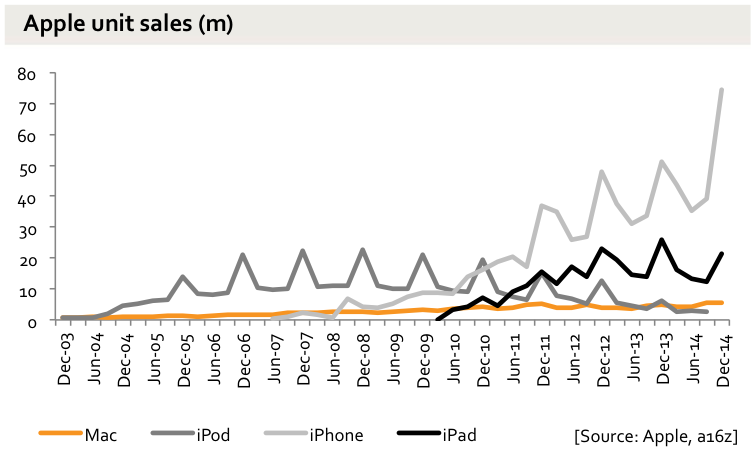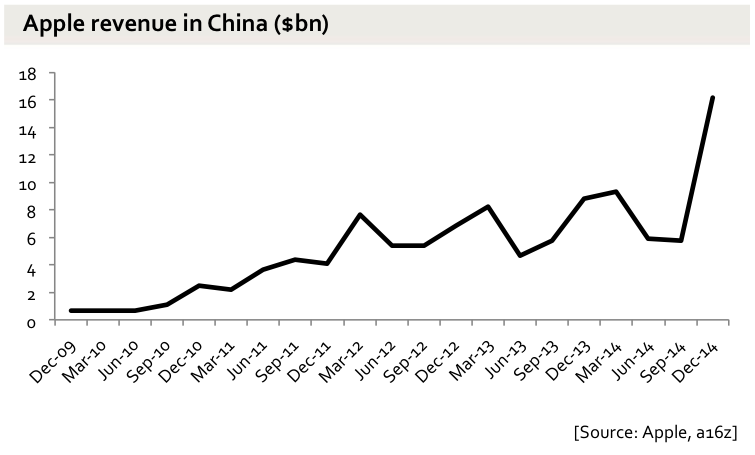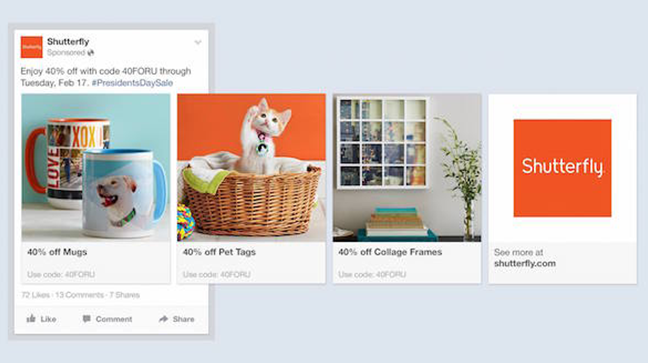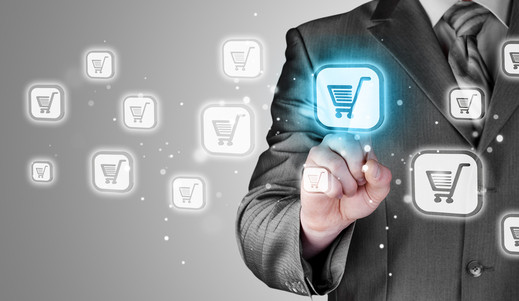Read original story on: TechCrunch
Charts courtesy of ben-evans.com
Apple just had the most profitable quarter of any company, ever. The Cupertino company announced on Tuesday the financial report for its fiscal 2015 first quarter ending December 2014, and the results are staggering.
The tech giant posted record quarterly revenue of $74.6 billion and record quarterly net profit of $18.04 billion. To put it in perspective, that means Apple makes around $8.3 million per hour in profit.

Thanks partly to the holiday shopping season, a record number of 74.5 million iPhones was sold in Q1, which saw a 46% year-to-year increase.
One side effect of the rising popularity of “phablet”-sized iPhone 6 Plus is a 21% drop in iPad sales compared to year ago, but at 21.4 million, tablet sales are still holding strong.

Another source for Apple’s record quarterly revenue comes from its aggressive retail expansion in China, its third biggest global market following the US and Europe. The company reports $16.1 billion in revenue from the greater China region, up 70% from the same period a year ago.








